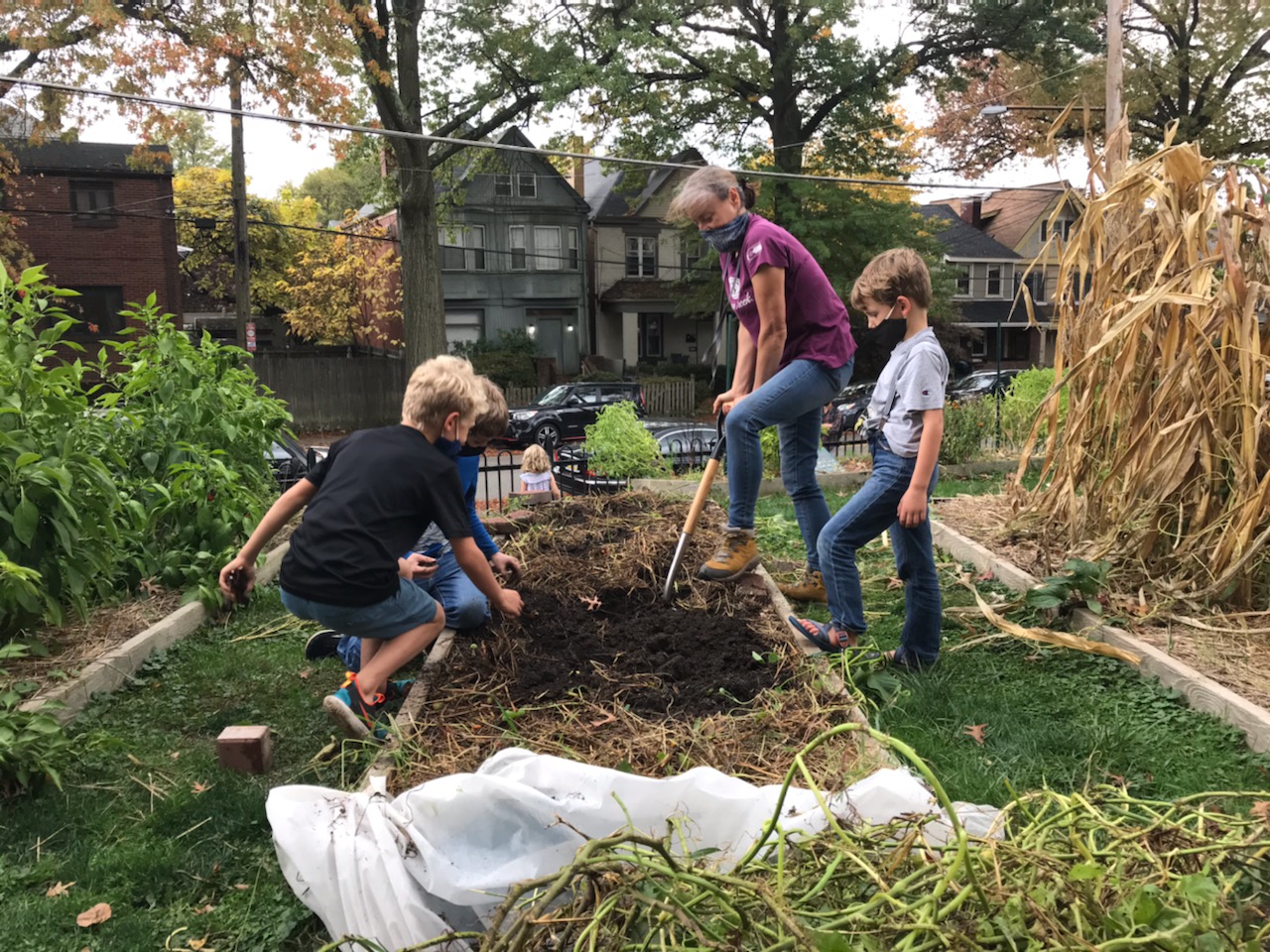
Students and teachers are returning to the classroom and the outdoor learning spaces our school gardens provide. So we wanted to take a look back at the important role school gardens have played in the community during the pandemic, even while school buildings have been closed.
Throughout the past year and a half, school gardens became food production sites, feeding neighbors and residents in need. This wouldn’t have been possible without help from dedicated teachers, staff, parents, and other volunteers like Caroline David. Read on to learn how the Colfax school garden became a place of solace for Caroline and a much-needed oasis for the whole neighborhood during the pandemic.
Grow Pittsburgh (GP): How did you first connect with the Colfax school garden?
Caroline: I was looking for places to volunteer, and I was drawn to the Colfax garden. None of my kids, who are now grown, went there. Before the shut-down, I’d come to see Farmer Ian’s classes, to help outside in the garden and in winter I’d help in the classroom with the cooking classes. It felt so good to be in the garden both helping with the children and on my own weeding, trimming, and harvesting.
GP: Why do you volunteer?
Caroline: I used to teach middle school reading and literature, but I can’t do that anymore. I have chronic fatigue syndrome. My energy can be very unreliable. I can do a couple hours at the garden each day then I’m done. But if I have a couple hours to give, what better thing to use it for? It’s such a joy for me. I really want the garden to be something special for the teachers and kids to walk by and feel a sense of wonder.
GP: What has the garden meant for you during this challenging time?
Caroline: When the pandemic first hit, I really needed something to do to get out of the house and have a purpose. I started going to the Colfax garden pretty much every day for a couple hours all summer. I found that the more time spent in a place, the more you connect with it and the more you start having dreams for that place. Being there, you get ideas. It became a mixture of not just growing food but wanting it to be a beautiful place, a learning place, and a very welcoming place to everyone.
Even during this pandemic, it’s been really cool how there was sort of a hub around the garden. People who walked by every day said hello. Neighbors drifted over and had conversations about growing. The maintenance workers came out on their lunch break and talked with me about their home gardens. It was lovely to have some teachers come out, too. Sometimes the kids in the neighborhood came by to help. It became a haven for anybody who needed that breath. Later, we shared some of the produce with people in the neighborhood. The Colfax garden plays a bit of a community role. Even a road crew that was resurfacing the street one day–I was trying to mend the compost bin and a guy from the road crew came over to help me out. It’s a place of shared knowledge and care.
GP: What else was special about caring for the garden last year?
Caroline: I spent a lot of time gardening alone. There’s something very nice about that solitude in the garden. When I’m there with someone else, I’m chatting. I’m not quite as observant. Alone I noticed so many things: wildlife, bugs, bees, spiders, butterflies. If I didn’t know it, I’d look it up. I actually kept a journal of the garden for last year. I came home tired and sat down and wrote. I wanted to save and share (even just with the page) what I was learning. I learned a lot about bugs, wildlife and plants. But also started getting a lot more awareness of this piece of earth. Working in a garden is such a good lesson in so many ways. It’s taught me patience and how to slow down to the pace of nature. There’s so much wisdom in it.
